The Flemish Influence On Henry Hudson
From the desk of David Baeckelandt on Sat, 2011-01-01 17:49
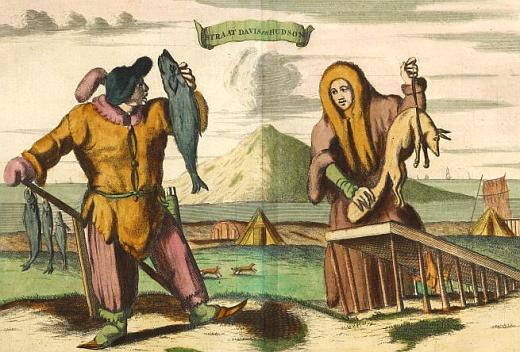
Recently I spotted an article by a Mr. James Kaplan entitled "Henry Hudson: The Failed Entrepeneur Who Founded New York". Mr. Kaplan's article follows the common, albeit mistaken, presumption that Henry Hudson is the underappreciated genius behind the settlement of New York, New Jersey, and Delaware. Further, the article follows contemporary Anglo-American scholarship in ignoring the direct and overwhelming contribution of the Flemish emigres to the conception, financing, and exploitation of Henry Hudson's "discovery" of New York.
Of course, one cannot fault Mr. Kaplan: there is no comprehensive, scholarly treatment in English (or Dutch, for that matter) of the direct involvement of Flemings in Henry Hudson's third voyage. Moreover, no constituency up until this time has had reason to assert the claims of the Flemish Protestant emigres: the Anglo-Saxon world had no reason to diminish the supposed stature of Henry Hudson; the Dutch scholarly community had no reason to underscore the key role of Zuid Nederlanders in their Golden Century; and the Flemish Catholics had no reason to extol the success of emigre Flemish Protestants. I mean to transcend these barriers with this piece. It is my hope that a proper scholar pick up the baton from these pages. Until that time, I submit these findings to you, Gentle Reader, for review and consideration of the Flemish involvement in Henry Hudson's "discovery" of the Hudson River Valley and its subsequent settlement.
It Started in Antwerp
Shortly after Henry Hudson returned to England in late 1609, he met with and explained his findings to the man who had initially recruited him for the job, Emanuel Van Meteren. Van Meteren, although born in Antwerp in 1535, had moved to London with his father in 1550. By 1583 his standing with both the English and the Dutch-speaking Protestant elite in the Netherlands was such that he had been named Dutch Consul (in 1583), a position he was to hold until his death in 1611. Van Meteren, a Flemish Father of America although largely ignored today, deserves more than a passing mention in the history of Nieuw Nederland. [1]
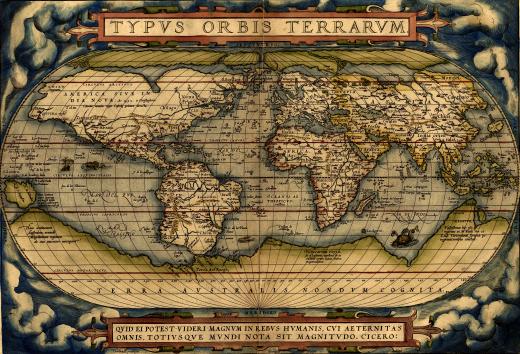
Van Meteren was a confidant of the Prince of Orange and a first cousin of Willem Ortels, the Antwerp-born, “Dutch” cartographer better known as Ortelius, who created the world’s first atlas (sample page pictured above). [2] Another first cousin was Daniel Rogers, Queen Elizabeth’s personal envoy in the Netherlands as well as the translator (into English from Dutch) of the English navigator’s bible, “The Mariners Mirror” (Dutch version pictured below). Both Ortelius’ Atlas and Rogers’ “Mirror” were critical tools for transatlantic voyages to the New World by Netherlandic and English seafarers until well into the 1700s. [3]
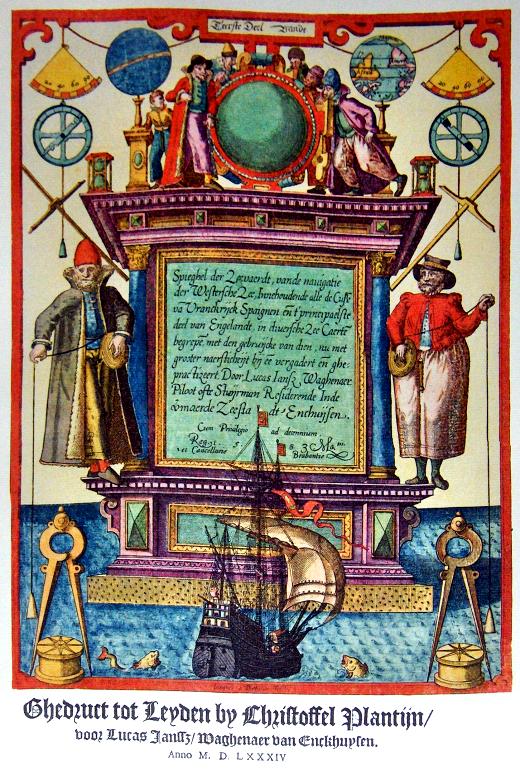
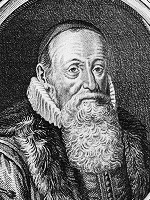
Van Meteren, then, in his day was a very connected person. Moreover, it had been he who had hired and sent Henry Hudson to Amsterdam. At Amsterdam, for six months from the late months of 1608 until his departure in April, 1609, Hudson consulted with Petrus Plancius (Flemish cartographer born at Dranouter, near Ieper, who created all the maps for the “Dutch” East India Company). Plancius was aided by the interpreting skills of another Flemish cartographer, Judocus Hondius (born at Wakkene near Gent and a confidant of Sir Francis Drake).[4] Their discussions were formalized by a contract with the Dutch East India Company. Hudson’s engagement contract was actually signed by Dirck Van Os, the head of the VOC (Dutch East India Company), also a Fleming (born in Antwerp) and witnessed by Judocus Hondius who signed as well. In short Henry Hudson’s enterprise was literally conceived of, guided by, and financed by, and authorized by Flemings.
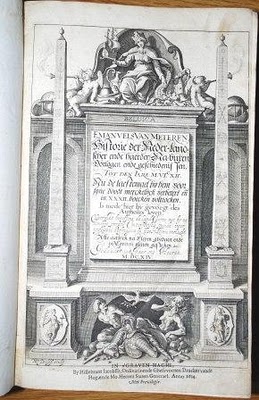
Henry Hudson, then, when he returned from his voyage, owed Emanuel Van Meteren an explanation for his activities and voyage. Van Meteren, who wrote the authoritative history of the momentous (for Europe at that time) struggle of the Dutch-speaking Protestants against the Spanish Catholics [5] (title page below), believed that trade and war went hand in hand. Thus, he believed that Hudson’s discoveries – to the extent that they offered new channels for trade – aided the battle against the Spanish (a theme we will return to later in a subsequent post).
With Henry Hudson nearby and Hudson’s journals literally in front of him, Van Meteren wrote the first account of Henry Hudson discovery of Manhattan and the Hudson River Valley, in 1610 (published in 1611).[6] Van Meteren wrote a detailed description which recounted the actual journey – including the specific navigational markers. The actual book and excerpts are pictured below, here.
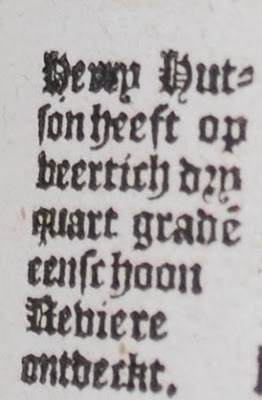
More to the point, Van Meteren described the economic importance of this discovery. Henry Hudson and his crew “found this a good place for cod-fishing, as also for traffic in good skins and furs, which were to be got there at a very low price.”[7] This statement resonated with the Flemish émigré merchants in Amsterdam (as Van Meteren knew it would). After all, they made their money on trade and especially the high value-added cod-fishing and fur trade.[8]
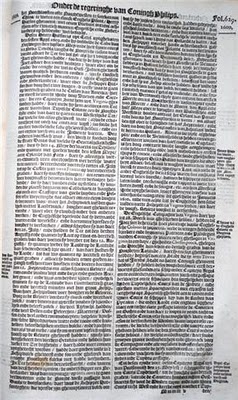
Up until this time, Amsterdam-based merchants (many of them Flemish émigrés), had sourced their furs in Muscovy.[9] Furs were in demand not only for winter coats but also for hats, lining, and a myriad of other uses. As early as 1566 two Flemish merchants from Antwerp had journeyed to Muscovy.[10] Olivier Brunel of Leuven had been the first to open that trade between northern Europe and what we today call Russia.[11] The fact that he had also reached Chinese merchants overland through Muscovy had excited Petrus Plancius (and other Protestant Flemish merchants in Amsterdam) as early as the 1580s. It was that tidbit – eyewitness reports by Brunel, which Hudson also acknowledged [12] – that made the effort less of a gamble and more of a calculated business risk. Consequently, they sent Henry Hudson off in April, 1609 searching for a Northeast (a sea route to China through the Arctic waters north of the Russian landmass) or Northwest (north over the top of Canada) Passage.
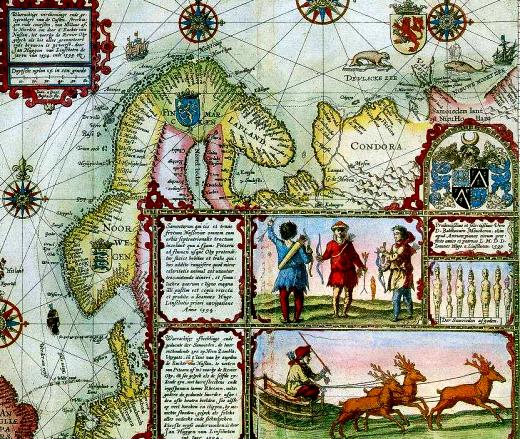
When upon Hudson’s return the Flemish merchants at Amsterdam realized that Hudson had uncovered a new source for furs, so much the better. Merchants purchasing furs in Muscovy incurred a 5% duty on both the goods they imported to trade and on the furs they exported.[13] In an era of little insurance and great risk, every % paid to someone else raised not only the cost of conducting business but the risks as well. So the chance to simultaneously exploit rich fishing grounds and trade for inexpensive yet high quality furs was a 17th century entrepeneur’s dream. Luckily, Hudson’s landfall was in the “no-man’s land” between the fast-growing English colonies of Virginia (Jamestown) and New England (Plymouth) along the coasts and the expanding French trading posts of New France to the northwest and west.
The émigré Antwerpenaars wasted no time following up on this opportunity. Within weeks of the news hitting the quays of Amsterdam, in 1610, the Antwerpenaar Arnout Vogels, dispatched a ship to duplicate Henry Hudson’s route.[14] Other Flemings followed, sometimes literally in their wake. Oftentimes there were so many Flemish ships trading with the Indians in the same waters of the Hudson River at the same time that gunbattles between the ships broke out. At least once that we know of (from the notarial record) Petrus Plancius had to be called in to arbitrate an agreement between these Antwerp natives.[15]
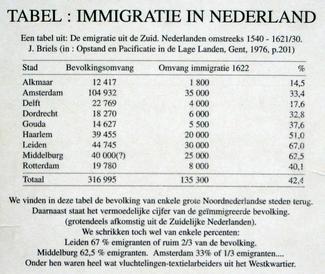
By 1613, Adriaen Block, possibly a native of Dendermonde, and in the service of Antwerpenaars, had sufficiently mapped the area after three voyages to the area.[16] In 1614 the Block map of Nieuw Nederland (the first written record of the name “Nieuw Nederland”) had been submitted to the States General of the United Netherlands as part of a petition for the establishment of the New Netherland Company (Nieuw Nederland Compagnie).[17] The States General granted a monopoly of trading rights to the company for three years. This company was the origin of the so-called “Dutch” colony of North America.
Other Flemings, such as Hendrik Hunthum [18] (also of Antwerp) – a man with fur trading experience in Muscovy and Paris – who later assumed command of Fort Nassau (the small fortified trading post set up near present day Albany) played prominent roles. At the end of the New Netherland Company’s three years’ license (e.g., in 1618), their official rights to a monopoly had ended[19] but the voyages (by the company and others) had not stopped. It was at this point in time (1618) that the “Dutch” – as the Pilgrims referred to the Flemish emigres in Leiden and Amsterdam – approached the group of Separatist Englishmen located in the Pieterskerk about colonizing the trading area. [20]
The approach to the Pilgrims was likely carried by Matthew Slade, an Englishman who also happened to be the son-in-law of Petrus Plancius, the VOC cartographer and the fellow who had coached Henry Hudson and supplied him with the latest cartographic information. Unknown to either Petrus Plancius or to the Pilgrims, Slade was also a spy for the English Ambassador.[21] Thus not only were all movements and activities of the Separatists at Leiden diligently reported to King James’ court, but the London merchants close to King James, such as Sir Edwin Sandys and Sir Thomas Smith, investors in the Virginia Company running Jamestown, were also well-informed.
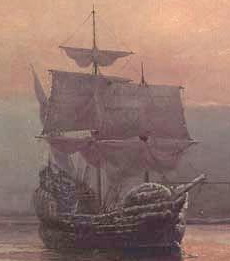
As students of Pilgrim history may well recall, the Pilgrims were soon (but secretly) approached with a counter offer from English merchants of the London Company. By 1619 more than 100 English Separatists at Leiden had begun the process of disposing of their worldly possessions, preparing for a life in the New World, and hiring two ships, the Speedwell and the Mayflower. Within a year of those preparations, in 1620, the Pilgrims had set off for what we now call the Hudson River. Their intent – and the intent of their backers at the London Company – was to claim the territory that Henry Hudson’s third voyage – conceived of by Flemings, financed by Flemings, managed by Flemings, charted by Flemings, and ultimately publicized by Flemings – had “discovered” for the Flemish-dominated United Netherlands.
The London merchants saw natural riches to be exploited. The Separatist colonists saw a chance to separate themselves from what they viewed as indifferent or hostile administrations. Both groups saw a chance to profit from the peltries of North American mammals. Of course, both groups – and Henry Hudson as well – profited from the contributions – economic, political, cartographic, navigational, etc. – of the Flemish Protestant émigrés at Amsterdam. It remains to be seen whether the Flemish profited at all. 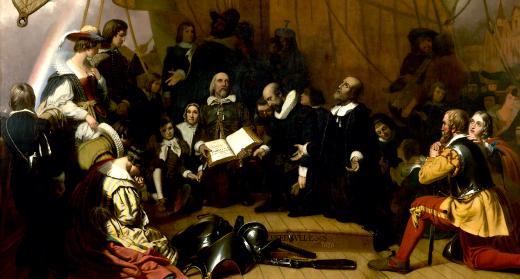
Subsequent posts will discuss prominent Flemings and Flemish Americans in 17th century North America.
Endnotes
[1] Despite his immense contribution to the discovery and settlement of North America – let alone his contributions to Anglo-Dutch relations, his important role in the Dutch Reformed Church in England, and his uncountable contributions to the struggle for the independence of the Netherlands against Spain, there is no scholarly treatment of Emanuel Van Meteren in English. I have drafted a very brief bio sketch of Van Meteren here: http://flemishamerican.blogspot.com/2009/07/flemish-fathers-of-america-emanuel-van.html . There is also a brief biographical sketch of Van Meteren in English in the introduction of John Parker, Van Meteren’s Virginia, 1607-1612, (Minneapolis: University of Minnesota Press, 1961), pp.8-9. However, for those who can read Dutch, the two books worth perusing are W.D. Verduyn, Emanuel Van Meteren, (‘s-Gravenhage: Martinus Nijhoff, 1926) and Dr. L. Brummel, Twee Balingen’s Lands Tijdens Onze Opstand Tegen Spanje, (‘s-Gravenhage: Martinus Nijhoff, 1972), especially p.81ff.
[2] The authoritative book on Ortelius, his life and his maps is Marcel Van den Broecke, Ortelius Atlas Maps: An Illustrated Guide, (Marcel Van den Broecke, 1996). http://www.orteliusmaps.com/publications.html See also http://en.wikipedia.org/wiki/Abraham_Ortelius .
[3] "The Mariner’s Mirror” was a translation of “Spieghel der Zeevaart” by Lucas Waghenaer. The first copies in English were printed by Judocus Hondius in England in 1588. These became so popular that for a long time “Waggonners” was a synonym for “atlas” in England. See http://en.wikipedia.org/wiki/Lucas_Janszoon_Waghenaer . It is almost certain that every English ship that set sail in the1600s and 1700s carried a “Waggonner”. See also Stanford University’s page here: http://www.slac.stanford.edu/pubs/icfa/logo.html
[4] See my earlier post, “Flemish Fathers of America – Judocus Hondius” here: http://flemishamerican.blogspot.com/2009/10/flemish-fathers-of-america-judocus.html
[5] Emanuel Van Meteren's book, called, Historie der Neder- landscher ende haerder Naburen Oorlogen ende Geschiedenissen, Tot den. Jare mvicxii (‘s Graven Haghe,1614 – see a copy here http://www.antiquariat.de/angebote/GID675382.html ) was widely read. It was one of the few books besides the Bible that William Bradford, Governor of Plymouth Colony, owned. Some of the Pilgrims actually used it as a reference for religious debates (e.g., Matthew Slade). The book went through many editions in various languages and was completely sold out year after year (see here for a list of the various editions: http://dutchrevolt.leiden.edu/dutch/geschiedschrijvers/Pages/Meteren.aspx ). It appeared in translation in French, German, Latin and English. In the late 19th and early 20th century, the American John Lathrop Motley offered a new English translation (in 1855) which became the basis of his best-selling history called “The Rise of the Dutch Republic”.
[6] The most recent, full length English translation of Van Meteren’s account of Henry Hudson’s voyage can be found in Kenneth T. Jackson & David S. Dunbar, Empire City: New York Through the Centuries, (New York: Columbia University Press, 2005), pp. 23-25.
[7] J. Franklin Jameson, Ed., Narratives of New Netherland, (New York, 1909), Elibron Reprint, 2005, p.89.
[8] For Flemish pre-eminence in cod fishing note that as early as the late 1300s Flemings had been involved with improving technology in cod fishing. This included everything from vessels (the ‘Flemish Buss’), to hooks (the ‘Flemish hook’), lines (the ‘Flemish knot’), and pickling (e.g. by Willem Beuckelszoon). See my “800 Year Chronology of the Flemish Contribution to the Discovery and Settlement of America: 864 AD – 1664 AD” here: http://flemishamerican.blogspot.com/2010/09/chronology-of-flemish-contribution-to.html
[9] See Donald S. Johnson, Charting the Sea of Darkness: The Four Voyages of Henry Hudson, (New York: Kodansha International, 1993).
[10] Gerrit De Veer, The Three Voyages of William Barents to the Arctic Regions (1594, 1595, and 1596), Ed., Charles T. Beke 1853, (London: The Hackluyt Society, 1876), 2nd Edition, pp.vi-vii. The earlier (pre-Brunel) Antwerpenaars were Simon van Salingen and Cornelis de Meyer.
[11] Olivier Bruneel (or Brunel) was a native of either Leuven or Brussel – both are given as his hometown http://www.win.tue.nl/~engels/discovery/brunel.html. Specifically, however, he is the direct link between the initial interest among the Dutch speakers and the Russian fur trade. He is the direct link between fur, the Flemish émigré merchants in Amsterdam, and Petrus Plancius’ ideas for reaching China and the east via a northern route. Ideas that Henry Hudson put into action at the direction of Van Meteren, Plancius, Hondius and Van Os.
[12] See Donald S. Johnson, Charting the Sea of Darkness: The Four Voyages of Henry Hudson, (New York: Kodansha International, 1993), p.69. Incidentally, this is a superb book for understanding the scope, origin and impact of Henry Hudson’s voyages.
[13] Thomas E. Burke, Jr., Mohawk Frontier: The Dutch Community of Schenectady, New York, 1661-1710, (Albany: State University of New York Press, 2009), 2nd Edition, p.3.
[14] Vogel’s voyage to the Hudson River Valley departed Amsterdam July 26, 1610. Van Cleaf Bachman, Peltries or Plantations: The Economic Policies of the Dutch West India Company in New Netherland 1623-1639, (Baltimore: John Hopkins University Press, 1969), p.4. Note that there is strong documentary evidence of earlier voyages to the Hudson Valley region by ships owned and chartered by Southern Netherlanders (Flemings and Walloons) but departing from Amsterdam back to 1591. See Simon Hart, The Prehistory of the New Netherland Company, (Amsterdam: City of Amsterdam Press, 1959), pp.7-10. Parenthetically, Professor Gustaaf Asaert, in his excellent (and absolutely indispensable) 1585: De Val van Antwerpen en de Uittocht van Vlamingen en Brabanders, (Tielt: Lannoo, 2004), pages 219, 223, 225, mentions de Familie De Vogelaers (and especially Marcus De Vogelaers). It is unclear to me (although circumstances suggest it) whether they are connected.
[15] See Simon Hart, The Prehistory of the New Netherland Company, (Amsterdam: City of Amsterdam Press, 1959), pp.74-97. The specific reference to Petrus Plancius’ efforts at arbitration can be found in ibid, p.77. Just as with the VOC, the WIC was formed from the combination of competing merchant companies. The Flemish dominance of both the VOC (The Dutch East India Company) and the WIC (The Dutch West India Company) will be addressed in a future posting.
[16] Block’s ship was owned by Arnout (or Aert) Vogels up until April 29, 1613, according to the Amsterdam notarial record. See Simon Hart, The Prehistory of the New Netherland Company, (Amsterdam: City of Amsterdam Press, 1959), p.73.
[17] Interestingly, these Flemish merchants, when referring to the area around the Hudson River in their notarial statements before 1614, frequently called the area “New Virginia”. See Simon Hart, The Prehistory of the New Netherland Company, (Amsterdam: City of Amsterdam Press, 1959), p.75
[18] Hunthum was a Fleming but with a reputation for cruelty to the natives (mutilating an Indian chief’s genitalia when he did not receive beaver peltries quickly enough) was hardly a credit to the reputation of Flanders. For references to Huntum’s “black reputation”, see Van Cleaf Bachman, Peltries or Plantations: The Economic Policies of the Dutch West India Company in New Netherland, 1623-1639, (Baltimore: The John Hopkins University Press, 1969), p. 131 and p. 131, n.35. That reputation hurt the Netherlanders’ trading opportunities with the Mohawks. For at least 20 years (1613-1633) Hunthum traded and lived in Nieuw Nederland. He was a ship captain and fur trader, later in the service of the WIC. Hunthum was killed by Cornelius vander Vorst in a quarrel in April, 1634 at Rennsselaerwyck. Hunthum’s father's name was Joris. Hunthum married Ibel Hendricks,the widow of Adriaen Mathyszen vander Put, on May 8th, 1618 at Amsterdam and his son Hans born 5/2/1619 in Amsterdam. Hans Jr. was first a clerk and later a cashier for the WIC in the 1630s. See Simon Hart, The Prehistory of the New Netherland Company, (Amsterdam: City of Amsterdam Press, 1959), pp.60-61.
[19] The patent was granted by the States General of the United Netherlands on March 27, 1614 and expired January 1, 1618. See Simon Hart, The Prehistory of the New Netherland Company, (Amsterdam: City of Amsterdam Press, 1959), pp.35-36. The owners of the New Netherland Company were all merchants who had trafficked to the region between 1610 and 1614. A large number of them were Flemish Lutheran émigrés from Antwerp such as the Pelgrom brothers, the Hunthum brothers, Jan Kindt (nephew of the Pelgroms and supercargo on Adriaen Block’s ship, which his uncles owned), etc. See Simon Hart, The Prehistory of the New Netherland Company, (Amsterdam: City of Amsterdam Press, 1959), p.41 ff.
[20] In the Pieterskerk area the Pilgrims-to-be had continued and overwhelming contact with Flemish émigrés. First, Leiden was overwhelmingly Flemish – more than 67% of all inhabitants of Leiden in 1622 came from the Southern Netherlands. See Dr. J. Briels, Zuid-Nederlanders in de Republiek, 1572-1630: Een Demografische en Cultuurhistorische Studie, (Sint-Niklaas, Uitgeverij Danthe), Tabel XXI: Immigratie in de Noordelijke Nederlanden – Samenvatting, p. 214. For a breakdown of the origin of the elite in Leiden from Flanders, see ibid, Tabel VI: Immigratie in Leiden – 1575-1619. Bron: Poorterboeken.p.133.
[21] Slade’s perfidy is well documented in his own letters which have been published as Mathew Slade, 1569-1628: Letters to the English Ambassador, Ed., Willem Nijenhuis, (Leiden: Leiden University Press, 1986).
This article was originally published on the "Flemish American" weblog.
